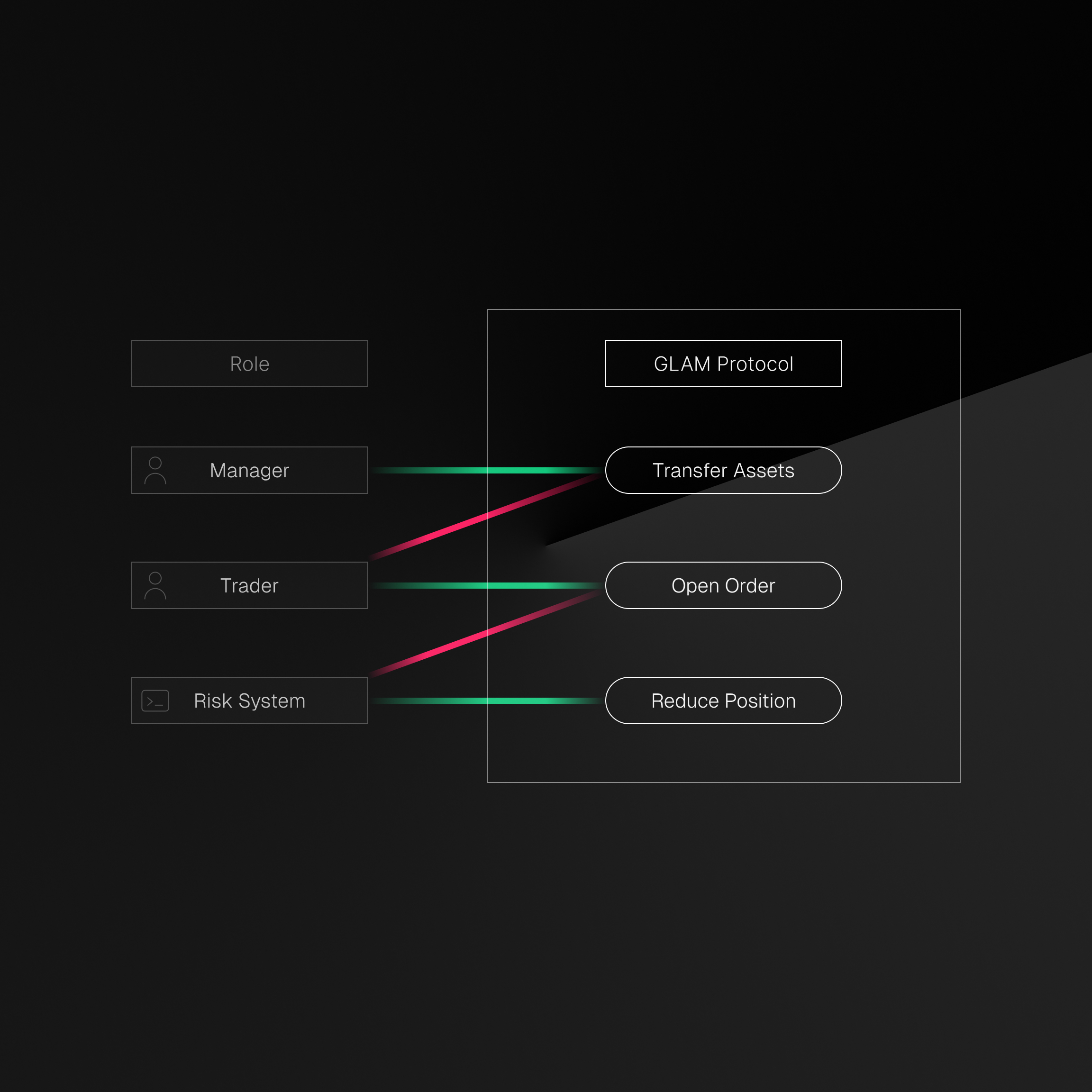Asset management infrastructure was designed for paper certificates and phone calls. Today, it struggles under the weight of Excel reconciliations and PDF reports.
The migration of capital onchain demands more than incremental improvements. It requires infrastructure that treats policies, permissions, and operations as programmable primitives. At GLAM, we build the foundation that helps asset managers move from legacy systems to Internet Capital Markets, the public onchain infrastructure for issuance, settlement, and operations.
Traditional fund operations rely on a complex web of intermediaries, each maintaining their own version of truth. This fragmentation creates operational risk, delays settlements, and obscures transparency. For emerging managers, setup costs can exceed six figures before managing a single dollar.
The solution is not to digitize existing processes but to fundamentally reimagine how asset management operates. When infrastructure becomes programmable, manual workflows transform into automated execution. When permissions are enforced at the protocol level, operational risk diminishes. When every action is recorded onchain, transparency becomes inherent rather than aspirational.
A New Operating System
Consider traditional fund operations. A manager rebalances a portfolio through emails, manual trades, and delayed reconciliation. Days later, investors receive updated statements. Each step introduces errors, delays, and costs.
With programmable infrastructure, the manager defines rebalancing logic as code. Execution happens automatically within predefined parameters. Every trade is recorded onchain with with near-instant settlement and real-time portfolio visibility. What took days now takes minutes.
This transformation is already underway. BlackRock is filing to tokenize its $150 billion Treasury Trust Fund, building on the success of its BUIDL fund which has accumulated $2.4 billion since March 2024 across seven blockchain networks. Apollo's Diversified Credit Fund (ACRED) raised over $100 million within months of its January 2025 launch, operating on six blockchains simultaneously.
The infrastructure supporting these products demonstrates blockchain's institutional readiness. Securitize has processed billions in tokenized securities while achieving SEC registration as a transfer agent. BNY Mellon launched blockchain accounting tools in April 2025 with BlackRock as the first client.
A New Class of Investment Products
Programmable infrastructure enables entirely new investment products. These are not traditional funds with blockchain settlement but natively digital products with capabilities legacy systems can’t support.
GLAM vaults exemplify this approach. A vault is a programmable container with embedded policies, granular permissions, and automated execution logic. Managers define precisely who can act, what actions are allowed, which protocols can be accessed, and under what conditions. These rules are enforced at the protocol level, not through legal documents.
Franklin Templeton's patent-pending intraday yield feature calculates returns "down to the second," enabling proportional yields for partial-day holdings. This innovation demonstrates how programmable infrastructure solves problems legacy systems cannot address.
The composability of onchain infrastructure unlocks sophisticated strategies. A single GLAM vault can lend through Kamino, hedge on Drift, provide liquidity to Meteora, and stake through Marinade. Each integration operates within vault defined policies. Every action transparent and auditable.
This automation extends across the entire value chain: NAV calculations, verifiable onchain track records, automated compliance checks, and fee distributions, eliminating the manual processes and opaque reporting that plague traditional fund operations.
Imagine ETF style automation and programmatic policies. Hedge fund level sophistication with onchain transparency. A new category of investment products.
A Global Layer for Asset Management
GLAM provides the missing infrastructure layer between tokenized assets and investment strategies. While others focus on wrapping existing products, we build the primitives that enable new ones.
Our vaults enforce control through code rather than contracts. Permissions are granular, allowing managers to delegate specific functions without compromising security. A trader might execute swaps within defined parameters but cannot withdraw assets. An automated system might rebalance positions but only across approved venues.
Mints extend this programmability to investor access. They define subscription terms, redemption windows, transfer restrictions, and compliance rules directly in the token. Private credit dominates non-stablecoin tokenization with $14+ billion in active loans. GLAM Mints can enforce the complex terms these products require, from lockup periods to qualified investor restrictions.
The Window of Opportunity
Excluding stablecoins, tokenized RWAs reached ~$24B by June 2025; stablecoins topped $230B in Mar–May 2025. Most analysts project $4-5 trillion by 2030.
This growth reflects fundamental improvements in operational efficiency, settlement speed, and transparency. On August 6, 2025, Marex, alongside Brevan Howard Digital, became the first clearing firm to use J.P. Morgan’s Kinexys Digital Payments for 24/7 programmable settlements. When trillion-dollar institutions deploy blockchain for critical infrastructure, the technology has crossed from experiment to production.
For asset managers, the question is not whether to adopt blockchain but how quickly they can build competitive advantages using programmable infrastructure. Early movers like BlackRock, Apollo, and Franklin Templeton have established positions. But the opportunity remains vast for managers who can leverage infrastructure to create differentiated products.
Of course, challenges remain. Regulatory frameworks are still evolving, with different jurisdictions taking varied approaches. Smart contract risks require new due diligence processes. And cultural change in traditional finance moves slowly. But these are implementation challenges, not fundamental barriers, similar to the early days of online banking.
GLAM exists to accelerate this transition. Our infrastructure handles the complexity of onchain operations, allowing managers to focus on strategy rather than plumbing. Whether building yield optimization vaults, tokenizing private credit, or creating novel investment products, GLAM provides the foundation.
The future of asset management is programmable, transparent, and efficient. It operates at internet speed with cryptographic security. It replaces trust with verification, delays with instant settlement, and opacity with radical transparency.
For asset managers ready to build in Internet Capital Markets, the tools are here. The infrastructure is proven. The opportunity is now.

.png)

.png)
.png)
%20copy.png)